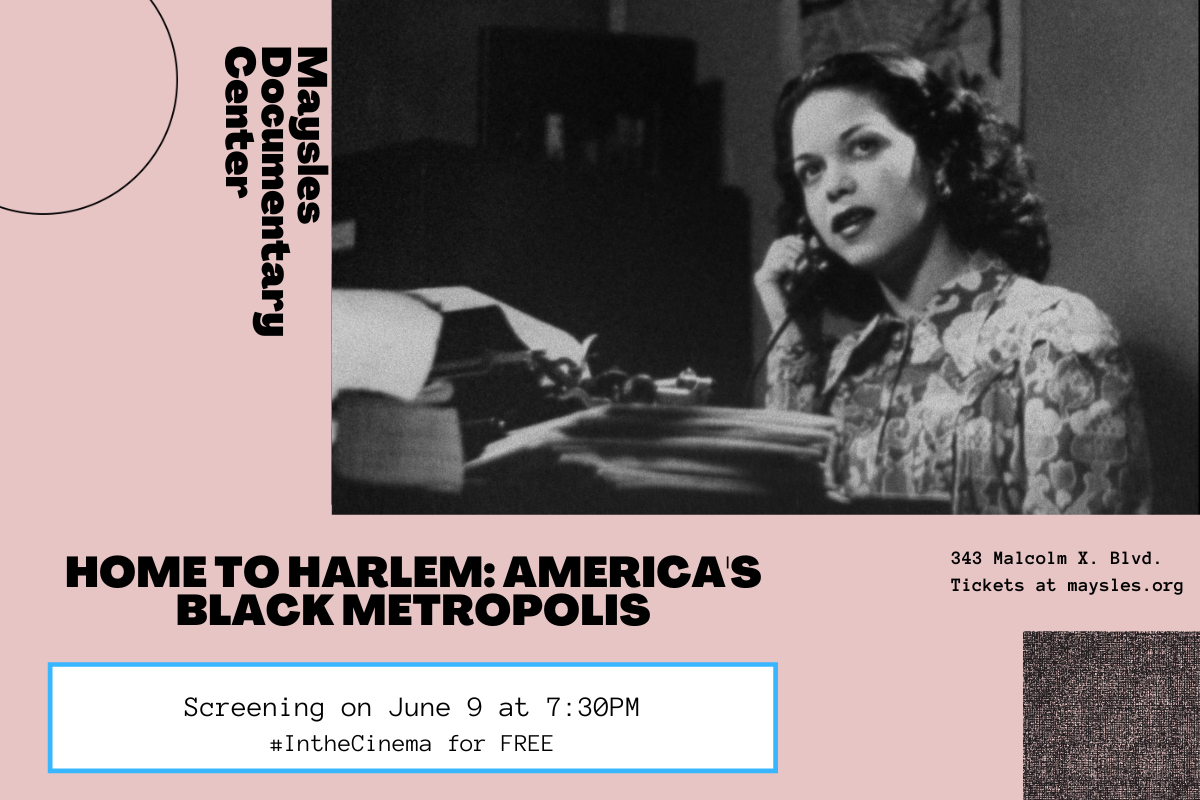Home To Harlem: America's Black Metropolis is screening for FREE Thursday, June 9 at 7:30PM as part of Made In Harlem: Home to Harlem curated by Ina Archer.
Home To Harlem: America's Black Metropolis
Harlem Trade Union Council Convention
Harlem Trade Union Council, 1949, 5 min. 16mm.
This 16mm silent, black and white film features parts of the Harlem Trade Union Council (HTUC) convention held on April 2, 1949, at the YWCA in Harlem. The footage includes shots of various unidentified speakers on stage as well as the audience. The second to last speaker appears to be Ferdinand Smith, chairman of the HTUC. The National Negro Labor Council consisted of delegates from ten black labor councils throughout the nation, the New York City unit being the Harlem Trade Union Council, which in July 1951 changed its name to the Greater New York Negro Labor Council (Daily Worker, June 3, 1950, May 18, June 4, 1951). In all its manifestations, the FBI labeled it "A Communist Party front organization" (FBI Main 100-12304-255).
Collection of the Smithsonian National Museum of African American History and Culture, Gift of Pearl Bowser
Life in Harlem: A Documentary Film of America's Negro Metropolis
Edward Lewis, 1940, 10 min. 16mm.
Within sight of the New York skyscrapers is a city within a city where over three hundred thousand people live in an area three square miles in upper Manhattan. These people work and play, live and die amidst poverty and prosperity, tragedy and laughter, in America's largest negro settlement, Harlem.
Throughout the film, the narrator describes quotidian activities of Harlemites: "a janitor sweeps the tenement sidewalk, a pushcart dealer pulls his heavy load, a little shoeshine-boy starts his day, policemen leave their stationhouse for neighborhood posts…" The film continues in this fashion, with instrumental music playing in the background as the narrator provides commentary about the onscreen activities.
Some of the other themes featured in the film include wealth inequality in Harlem, with shots of the Sugar Hill neighborhood; people shopping in Harlem’s markets; Harlem’s ethnic diversity; Harlem’s main thoroughfares: Lenox and Seventh Avenues; Father Divine and his evangelical movement; Harlem’s marching band culture; the Good-luck tree that Harlemites call "Tree of Hope.” The final scenes focus on Harlem’s nightlife. In another scene, people are seen doing the lindy hop at a swing club followed by other scenes with women dancing in cabarets and couples dancing in a ballroom.
Collection of the Smithsonian National Museum of African American History and Culture, Anonymous Gift in memory of Ernest (Ernie) R. Smith, Jazz Historian
A People’s Playhouse
American Negro Theatre, 1944, 5 min. 16mm
Produced by the National Recovery Administration (NRA) this short promotional film documents the the newly-founded American Negro Theater’s construction of a small theater in the basement of the NYPL Branch at 135th and Lenox Ave the current location of The Schomburg Center.
The short subject shows Black artists training in acting techniques, rehearsing, and operating stage equipment for their productions. Notable actors like Frederick O’Neal and ingenue, Ruby Dee, are shown as well as footage of Harlem streets. Seen in the the background, is an Aaron Douglass mural, one of four paintings titled Aspects of Negro Life (1934 ) commissioned by the Public Works of Art Project (PWAP). The painting is still viewable on the site of the theater in the lower floors of the Schomburg Center.
Preserved through a collaboration between Anthology Film Archives and the Smithsonian’s National Museum of African American History and Culture.
From These Roots
William Greaves, 1974, 28 min. 16mm
From These Roots uses still photographs and filmed sequences to recreate the social and political climate of the Harlem renaissance - a period of great artistic and cultural activity in the 1920's which had, and still has, a profound influence on Black American art, self-awareness, and life-style.
16mm print courtesy of The NYPL Performing Arts Library Reserve Film & Video Collection
















